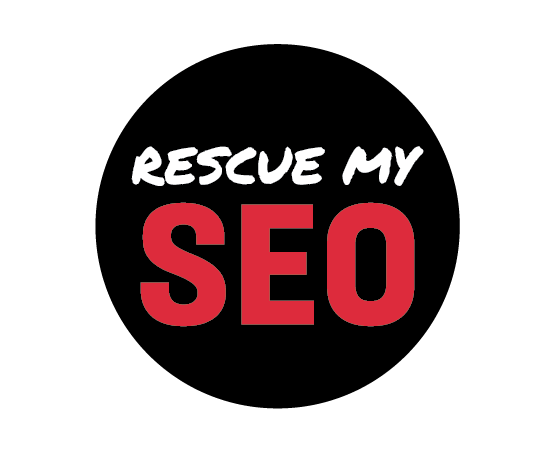
Building location pages that actually rank is a challenge we see all the time from small business owners and growing multi-location brands. If you want to drive more search traffic and capture the flood of “near me” and geo-based Google searches, your location pages can’t just be cookie-cutter copies with a different address. They need to be rich, helpful, and entirely unique—built for real people, not just search engines. At Rescue My SEO, we’re obsessed with helping multi-location businesses turn every branch or location into a real asset. Here’s our step-by-step, no-nonsense approach, grounded in what gets actual results for local SEO.
Why Great Location Pages Matter
Location pages are the foundation of multi-location SEO. When someone is looking for a “plumber in Pittsburgh” or a “daycare near Dallas,” Google tries to display a page tailored to that spot—not just your homepage. A well-built location page bridges this gap between what people ask and what your business has to offer in their local area. Effective pages:
- Boost your rankings for city and neighborhood searches
- Give Google localized trust signals (which improves map pack visibility)
- Convert more visitors into calls, store visits, and leads
- Show off your unique offerings at each location, so it’s not the same generic content repeated everywhere
Core Elements of a Location Page That Ranks
1. Intent-Focused Keyword Research
- Start with the language your customers actually use: “Hair salon in [Neighborhood],” “Emergency vet [City],” or “Tax prep near [ZIP].”
- Compile a master keyword list for each city or neighborhood. Target both broad keywords (e.g., “landscaping Dallas”) and niche ones (“dog-friendly landscaping services Dallas”).
- Aim for different variations throughout the content—don’t just repeat the same phrase.
2. Unique, In-Depth Local Content
- Never use boilerplate. Every page should feel like the homepage for that location. Write a custom intro that explains why this branch is special.
- NAP consistency: Prominently display Name, Address, and Phone number. Match this exactly with your Google Business Profile and major directories.
- Google map embed: Add an interactive map pinpointing your location. Make it easy for users and search engines to know where you are.
- Local description: What do you offer at this location? What’s the experience like? Are there services/products unique to this branch?
- Original photos: Use images of your location, team, vehicles, signage, or products at this branch. No stock images.
- Local testimonials: Add 1–2 handpicked reviews mentioning your location. Invite customers to mention your city or staff in their reviews.
- Business hours & accessibility info: Include up-to-date hours, parking instructions, wheelchair access, and public transit info.
- Relevant offers: Location-specific coupons or promos go a long way. Make it feel local.
3. Page Structure & Technical SEO
- URLs: Use clear, unique slugs. Example:
/locations/pittsburgh-pa/ - Title tags: Start with your main service, location, and brand. Example: “Dog Daycare in Pittsburgh, PA | Pawsome Pets”
- Meta descriptions: Write a custom snippet for every page, including the city, main offering, and a unique CTA.
- Heading structure: Use one H1 with the location and service. Use H2s for directions, staff, offers, reviews, etc.
- LocalBusiness Schema: Add organization and local business markup, including branch address, hours, phone and more.
- Page speed: Keep load times under 2 seconds. Compress photos and avoid unnecessary widgets.
4. Internal Interlinking and Navigation
- Add an “All Locations” page that links to every branch, so users and bots can easily browse your footprint.
- Link up nearby or similar locations (“Also visit our North Dallas branch” or “Find our services in Austin too”).
- Breadcrumbs improve crawlability and let users retrace their path.
5. Connect With Google Business Profile & Local Citations
- Every GBP profile for each location should link directly to its location page—not your generic homepage.
- Add your location page URL to all major listings (Yelp, Apple Maps, Bing, local directories).
- Keep Name, Address, and Phone number 100% consistent everywhere.
Sample Location Page Template
- H1: Primary Keyword + City (e.g. Plumber in Pittsburgh, PA)
- Intro paragraph explaining what makes the branch unique
- NAP block: Name, Address, Phone, with Google Map embed
- Hours of operation
- Service List (what’s offered at this location)
- Original photos of the storefront, team, service vehicles, displays, etc.
- Quick links to directions & routes (with Google Maps link)
- 1-2 location-specific testimonials or Google Reviews
- Special promotions or events (if any)
- Parking/Accessibility info
- Internal links: Main “All Locations”, nearby cities/branches
- Clear Call to Action (Book now, Call now, Visit us, etc.)
Tips For Scaling When You Have Many Locations
- Invest in a templated (but not generic!) system for your core layout so you can update hundreds of location pages without making them feel the same.
- Schedule quarterly content refreshes—add new testimonials, updated photos, and fresh offers for each branch.
- Listen to customer feedback. If users are unclear about parking or hours, update those sections immediately.
- If you serve “service areas” rather than storefronts, list all neighborhoods, ZIP codes, or districts covered and include a short blurb on each.
Common Pitfalls to Avoid
- Don’t use identical content with just the city name swapped out.
- Don’t forget about images—they should be original or at least different for every page.
- Don’t neglect your location pages! They should not be set-and-forget—refresh often.
Beyond the Basics: How We Do It at Rescue My SEO
At Rescue My SEO, we don’t believe in shortcuts or “one size fits all.” Every business is different, and every location tells its own story. When we help clients create location pages, we:
- Dig into the real voice of the customer—how do people in this city talk and search?
- Showcase what’s special about your local staff, service, or history (community events? awards? a great manager? Put them on the page!)
- Use data, not guessing. We find the keywords your local audience actually uses—the ones that drive calls, not just clicks.
- Focus on longer-term performance: Quarterly audits, regular review requests, superb page speed, and adapting as Google’s algorithm evolves.
Want to See What Great Location Pages Can Do?
If managing SEO for a multi-location business feels overwhelming, or if you’re frustrated that your location pages aren’t showing up, we’d love to give you a fresh set of eyes. Check out our Local SEO Services or contact us directly for a free audit of your current location pages. At the end of the day, just a few smart changes can mean the difference between an invisible location and the top spot on Google Maps. Invest the time—or partner with an experienced team—and make every branch a traffic and sales engine!


